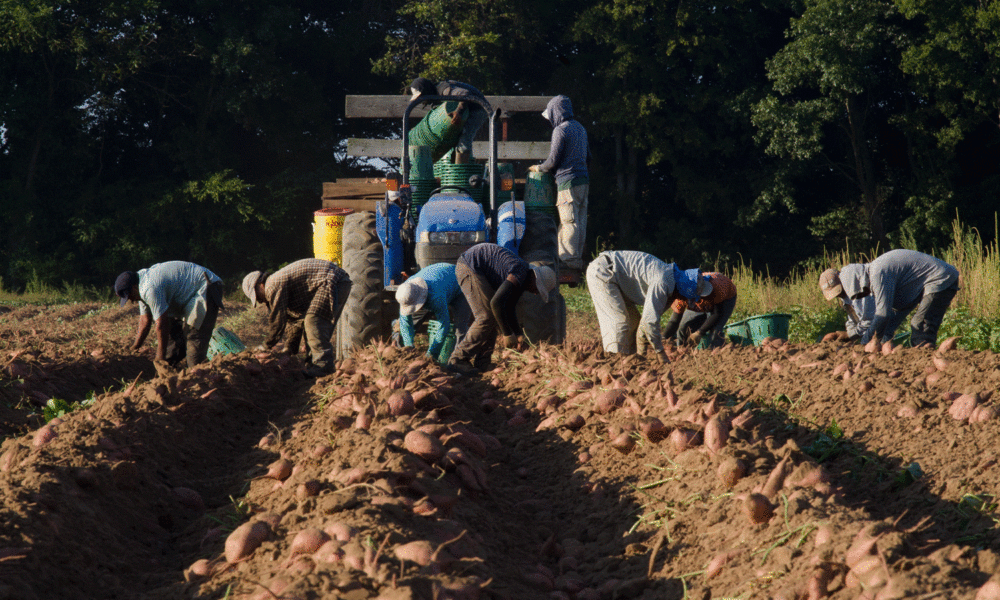Farmworkers, construction workers, and other outdoor workers are among the first groups of people to feel the effects of climate change. The Pacific Northwest experienced record-breaking high temperatures during a five-day heat wave that led to over 500 deaths in Oregon, Washington, Idaho, and Canada.
Among the deaths was Sebastian Francisco Perez, a migrant farmworker from Guatemala who recently arrived in the United States to work and support his wife back at home. On June 26th, Perez was found alone, unconscious in the fields where he was working on irrigation lines in an Oregon nursery where temperatures reached 104 degrees Fahrenheit. During the same heat wave, at least two other people died from heat illness in the workplace including a construction worker and a warehouse worker.
The dangerously hot temperatures and tragic deaths that followed prompted the state to adopt a temporary emergency rule to protect workers when exposed to excessive heat. The new emergency heat rule was announced 12 days after the tragic and preventable death of Mr. Perez. While Oregon’s rule is not permanent, by adopting an emergency rule, Oregon joined neighboring states Washington and California in having a standard in place as workers grapple with extreme heat. However, workers in the rest of the country are left with little to no protection against these hazardous conditions.
A new report released by the Union of Concerned Scientists highlights how rapidly rising temperatures are affecting outdoor workers. With heat waves expected to grow in frequency and intensity, the outdoor workforce will be more susceptible to heat-related illnesses such as heat exhaustion or heat stroke. In particular, the report finds that, because Black and Hispanic or Latino people make up a high percentage of the outdoor workforce, they have a higher risk of being exposed to extreme heat than the general population.
As climate change grows worse, the UCS report also finds that workers will not only have their health more at risk, but they will lose income as a result of extreme heat. Farmworkers are already experiencing a loss in work and income due to excessive heat and wildfire smoke as working conditions become more unsafe and employers end the workday early. Yet many continue searching for employment opportunities despite the increased risks of a heat injury or illness. With federal workplace heat protections currently lacking, state agencies and authorities have a responsibility to ensure workers are protected from extreme weather conditions.
Oregon heat standard
Worker, environmental, and public health advocates have been involved with the Oregon OSHA Rulemaking Advisory Committee to create standards to protect workers from exposure to excessive heat and wildfire smoke. The development of these standards is the result of Executive Order 20-04, in which state agencies are directed to take actions to reduce and regulate greenhouse gas emissions. As mentioned, the tragic death of Perez and other workers pushed the agency to adopt emergency rules while the permanent rules are set to be finalized in the fall of 2021.
The Oregon emergency heat rule adopted on July 8th, 2021, requires training for workers and supervisors on heat-illness symptom identification and treatment. The rule also mandates that employers provide access to cool water and shade (or alternative cooling methods) once the heat index (a combination of temperature and humidity) reaches 80 degrees Fahrenheit. This is especially important for farmworkers who usually lack access to shade when working out in the fields. At a high heat threshold of 90 degrees (notably lower than high heat thresholds in California (95 degrees) and Washington (100 degrees), employers are required to provide workers with additional paid breaks every two hours, observe workers for symptoms of heat-illness or have a buddy system in place, and develop an emergency medical plan. One of the biggest concerns with the emergency rule is the lack of explicit protections for agricultural labor housing occupants. Such protections are critical, particularly as about 13% of farmworker housing units nationwide are owned by farmworkers’ employers.
A few weeks after advocates demanded a standard to protect residents in labor housing, Oregon OSHA adopted another emergency rule on August 2nd, 2021. The rule requires employers to keep labor housing temperatures at or below 78 degrees Fahrenheit whenever the heat index outside is at or above 80 degrees. Alternatively, employers can provide communal cooling areas for at least 50% of the occupants at each of the labor housing sites. However, the new standard still falls short of protecting labor housing occupants, as there is no requirement to install air conditioning or air purification systems, the latter of which would help protect workers from wildfire smoke exposure.
The adoption of these emergency rules is a good start to protecting at-risk workers, but there are areas for improvement during the permanent rulemaking process. For instance, the heat standard must take into account the differing workloads of outdoor jobs, as jobs in the agricultural and construction industries tend to involve a greater degree of physical labor than others. Additionally, OSHA should consider more restrictive guidelines to protect workers once temperatures exceed 100 degrees Fahrenheit. Lastly, as mentioned in the UCS report, a loss of income will hurt workers and the state should consider developing disaster pay funds to support these workers.
States on the West Coast have taken steps in the right direction to protect workers from climate-related extreme weather, but a national standard is needed to keep workers across the country safe. Advocates will remain engaged in the Oregon permanent rulemaking process while pushing for a national heat rule. The world continues to get hotter and protections are needed to minimize the impact that the climate crisis has on outdoor workers.

